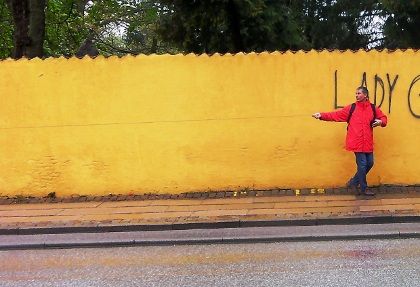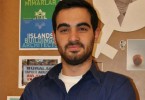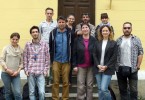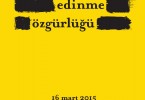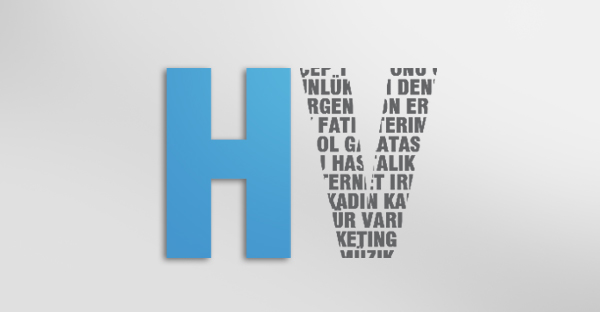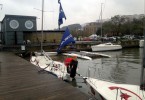Celine Orman
The performer on the stage walks with a long, black twine following him stuck under his shoe. He takes off his shoe but the black string continues to follow him. Then he takes his socks off, freeing himself from the black twine that insistently comes after him.
This is a scene from a show of contemporary dance that took place within the context of IDANS Contemporary Dance and Performance, the only international, interdisciplinary festival of visual and live arts in Turkey.
The events were presented during October. The festival continues with additional events until the end of 2010. With cosmopolitanism as a theme the festival filled stages and streets with 154 artists, 41 projects and over 50 performances during the month. But who are the ones who watch these events? I went to the weekend’s performances to explore the contemporary dance scene in Istanbul.
A big audience for two solo-performances
The contemporary performance art scene in Istanbul is mainly based in Garaj Istanbul, a non-profit organization with a venue in Beyoglu. Most of the IDANS events took place there. But I went to one at Mimar Sinan University, Bomonti campus, which is not quite far from the city centre. It surprised me to see that so many people had found their way to watch the premier of two solo performances on Friday evening. I got the feeling many of them were friends of each other and the performers. Another part of the audience was composed of foreigners, most probably connected to the festival; the third part seemed to be students and dancers. Suddenly the doors opened and everyone headed into the theater. My investigation of who in Turkey would be interested in this branch of visual art had to wait.
A personal dance experience
The first piece called SITE was performed by Filiz Sizanli, exploring the relationship between architecture and power. Mustafa Kaplan is considered as one of the most interesting choreographers in Turkey performed in the later show. The fascinating thing with him is that he doesn’t have a background in any dance school. When I met him a day after his performance he told me about his journey to this particular branch of visual art, namely the contemporary dance.
˝I was introduced to dancing when I studied Electronic Engineering at Yildiz Technical University. A dance teacher used the studio at our university, and she invited the students to join. I found it really interesting. Gradually I wanted to explore contemporary dance even more, and we were around eight people without any dancing background. We trained together for four years, two hours every day. We developed our personal practice and experience of dance.˝
Founders of the independent dance scene in Istanbul
Two hours every day weren’t enough though. To continue deeper in the field of contemporary dance Mustafa and his friends founded the Cati Dance Studio, a contemporary dance association offering workshops and supporting dance projects. Over time Mustafa began working professionally for the Modern Ballet Company and later on the Istanbul Metropolitan Municipality Theatre. ̋After Cati I wanted to continue with my own projects so Filiz Sizanli I and created Taldans, our own dance company, and we are going on a tour to Europe next week with the two performances you saw. ̋̋
Dance transforming volume
The piece by Mustafa Kaplan called İP (Rope), explores the transformation of volume from structures in the urban space to the appearance on the stage. Some televisions were placed on the stage; one of them showed how he himself was measuring a huge wall surrounding a cemetery with a ball of twine. The black twine was also used on stage as contours of forms changing as he collaborated with them. “I work with transition and what happens when I transform a volume from a structure in the city into the stage” he explains. The twine he used around the cemetery is the same as he used on stage. In one section it follows him stuck under one of his shoes, he takes off his shoe, but the twine is still following him stuck under the sock. After taking his sock off, he is finally free from the string. The performance is expressing the relation between the city and the individual. This demonstrates how you are dependent on the city, and you have to accept it all even if you don’t like everything with it. And the city is dependent on you, since you are creating your part of it. In another television you can see how the camera follows someone walking with a suitcase on wheels. The noise from the wheels in touch with different surfaces in a city attracts the attention of the audience to all the different sounds that it creates. In the end of the show Mustafa is carrying a big stone on his back which turns my perception around. Instead of him walking on the concrete slabs in the city, the concrete is being carried by him. It made me think about the city as a hard place and the people living there very fragile.
I ask Mustafa about the connection between the ball of twine, the stone and the sound. “When I walked around the cemetery, I got the idea to travel with something else than a string. How is it to carry around a stone, and how is it to focus on the sound?”
Dance is universal
I put my question concerning the audience to Mustafa Kaplan. He explains that the contemporary dance scene in Istanbul is growing really fast, especially during the last five years. The IDANS festival with its interdisciplinary aspect attracts a wider audience and brings people interested in contemporary art to the dance scene. He is surprised by the broad range of people coming to watch performances. But it is still quite an amateur world. Even though Mustafa Kaplan is working fulltime with his dance projects, he is not able to provide for himself only by working in Turkey. He is dependent on co-operators and dance festivals in Europe, since there is a very limited economic resource available in Istanbul. He really wants to reach more people with his dance. “We went touring with a piece called Dolap (Cupboard) which got a lot of attention, in small villages in Turkey as well as big cities in Europe. It was really satisfying to see the same reaction everywhere. Some things are universal.”

